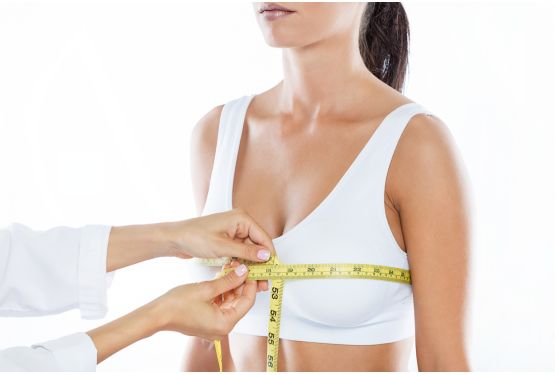Mammary hypoplasia is defined by the underdeveloped volume of breasts in relation to the general physique of the patient. It can be a result of underdevelopment of the gland during puberty, or it may appear again because of loss of glandular volume (pregnancy, weight loss, hormonal imbalance…).
Lack of volume can be associated with ptosis (“falling” breasts with the sagging of the gland, stretched skin, and too low areoles).
The operation can be carried out at any age, starting from the age of 18. A minor patient, as a rule, cannot be subjected to aesthetic breast augmentation. The operation, however, is possible in case of significant hypoplasia or reconstruction because of tuberous breasts or agenesis (underdevelopment) of the breast.
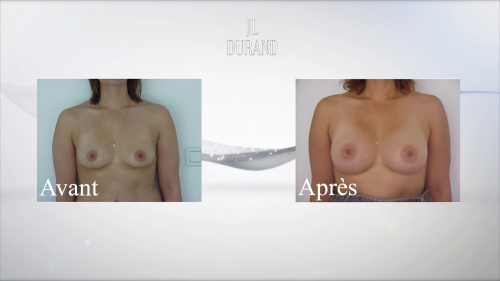
Types of breast implants
Modern breast implants include a shell and a filler. The shell always consists of a silicone elastomer. However, the prostheses differ in their content, depending on the substance, which fills the shell.
A breast prosthesis is considered to be pre-filled when the filling product was injected at the factory (gel and/or saline solution). The range of different volumes is set by the manufacturer.
Implants filled with saline are filled up by the surgeon. He can adapt them to some extent to the size of the prosthesis during the surgery.
Breast implants filled with a new generation silicone gel
The vast majority of breast prostheses currently used in France and in the world are pre-filled with silicone gel. The patient often negatively perceives the hypotrophy physically and psychologically. She sees in this an encroachment on her femininity, this can cause self-doubt, a sense of non-adaptability to life in society and malaise, sometimes even deep, up to real complexes. Therefore, the operation allows increasing the volume of the breast, which seems too small, due to breast prosthetics.
These prostheses, which have been used for more than 40 years, have proved their safety and excellent adaptation to this kind of surgery, as they are very similar in composition to the gland. By the way, they were actively developed in the late 1990s, to correct those shortcomings in which they could then be reproached.
Today, all breast implants available in France comply with clear and strict standards: the EU (European Union) labeling plus the ANSM (French National Agency for Medicines and Health Products Safety).
They consist of a soft silicone gel wrapped in a strong and elastic impermeable shell, made of a silicone elastomer that can be smooth or textured (rough).
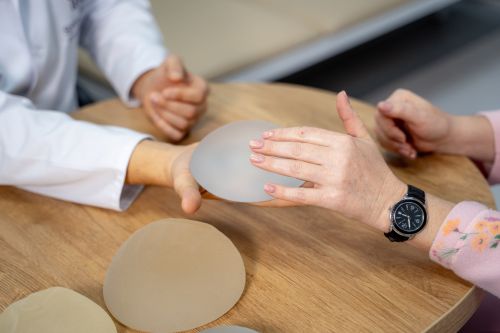
Impressive quality, which has new breast prostheses, confirmed their high reliability with respect to the shell and the gel itself:
- shells, which walls are much stronger today, hinder the “evaporation” of the gel outside, which was an important indicator of the shells, and they have a very high wear resistance;
- “connecting” silicone gels, which composition is less liquid, limit the risk of spillage in case of rupture of the shell.
Along with this, the increase in the reliability of a new generation of silicone implants is also characterized by the wide variety of forms available at present, allowing maximum individual adaptation in each specific case.
Thus, in parallel with conventional round prostheses appeared “anatomical” implants – in the form of a water drop, more or less high, broad or convex.
This variety of forms, combined with a wide choice of volumes, allows optimizing and adapting the choice of prostheses practically at the level of the “individual order”, depending on the physique of the patient and her personal expectations.
Other types of breast prostheses
The prosthesis shell is still made of silicone elastomer, only the filler differs. Today in France only two versions of silicone gel are allowed:
Saline
It is about salt water (which is 70% of the human body). These prostheses can be “pre-filled” (at the factory) or “inflatable” (by the surgeon during the operation). Due to their liquid content (not jelly-like), they have a little natural composition, they form much more “folds”, felt to the touch and even visually discernable, and can often deteriorate from sudden and premature crumpling.
Hydrogel
This is the newest substance licensed in 2005 by ANSM. This is a watery gel, consisting mostly of gel-like water using cellulose. This gel, which is more natural in composition than the physiological solution, is also able to dissolve in the body in case of rupture of the membrane.
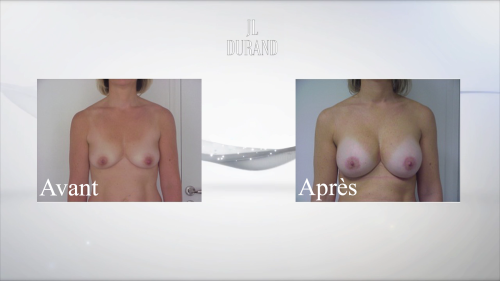
Breast surgery and characteristics of the installation of breast implants
Before the operation, the strategy of the operation is coordinated with the patient. Thus, the location of scars, the type of implants, and their placement relative to the muscle will be pre-determined (see below).
A preoperative blood test will be performed according to the prescription. In addition to consulting with the surgeon, a consultation with the anesthesiologist is also conducted. Stick to the general recommendations as with abdominoplasty.
Anesthesia and hospitalization
As a rule, the operation is performed under general anesthesia, less often under local anesthesia. In addition, one-day hospitalization can be provided (arrival in the morning and the patient’s discharge is permitted from the following day).
Sometimes the operation is “out-patient” and the patient is released on the same day after observation for several hours.
How is breast surgery performed?
Skin incisions: There are several possible “priority routes”:
– 1 or 2 scars on the areola
– 3 in the armpit
– 4 under the chest.
The surgeon will conduct a detailed survey followed by a thorough examination of the patient. He will take into account all the parameters for each individual woman (size, weight, pregnancy, breastfeeding, morphological features of the chest and breast, skin quality, quantity and size of fat glands, muscles):
- mammary areola pathways with a cut in the lower segment of the circumference of the areola or horizontal opening, bypassing the nipple at the bottom (1 and 2);
- underarm pathways with a cut under the arm, in the armpit (3);
- inframammary pathways with a cut in the fold under the breast (4).
The contour of these cuts complies with the location of future scars, which will be hidden in the junctions or natural curves.
Methods of breast prostheses installation
Breast implants can be inserted through incisions. They can be located in two places:
- breast prostheses are placed directly behind the gland in front of the pectoral muscles;
- breast prostheses are placed deeper behind the pectoral muscles.
You can discuss with your surgeon the choice between these two locations, as well as their advantages and disadvantages.
Additional Actions
In case of the breast ptosis (sagging of the breast, low areola) it is noted that the skin of the breast should be reduced in order to raise it (“mastopexy”). In this case, this skin resection will lead to more significant scars (around the areola, ± vertical).
Drainages and dressings
The duration of the operation is 1-2.5 hours, depending on the doctor’s decision, priorities of cut-points and additional actions. After it, small drainage can be put. It will drain blood, which can accumulate around the prosthesis.
After the end of the operation, the patient is given a “modeling” dressing made of an elastic bandage.
Postoperative period
In some cases, patients experience pain in the first days after a breast reconstruction surgery, especially when the implants are big and located behind the muscles. In this case, painkillers will be prescribed for a few days, depending on the strength of painful sensations. In the best case, the patient will feel a strong sense of skin tension.
In the first few days, edema (swelling), bruising are often observed. A patient can be recommended to wear a bra for several weeks by day and by night.
As a rule, suture threads are internal and absorbable. Otherwise, they will be deleted after a few days.
It is better to suspend work for a period of 5-10 days and give up sports for 1-2 months.
The final result can be estimated in 2-3 months. During this period, the breast will regain its flexibility, and the prostheses will stabilize.
The volume and shape of the breasts will be improved. Scars, as a rule, are almost invisible. Breast augmentation affects the overall silhouette, which allows you to have greater freedom in choosing clothes. In addition to physical improvements, the acquisition of a full sense of femininity by the patient often has a very favorable psychological impact.
Regardless of the life of the prostheses (see below) and with the exception of cases of significant weight fluctuations, the volume of the breast will remain stable for a long time.
However, with regard to the form, the “increased” breast, as well as the natural breast, will be subject to heaviness and effects of aging at different rates (it’s affected by the age, skin condition, and the volume of breast implants).
Possible disadvantages of breast surgery
- residual volume asymmetry, which is not completely corrected despite breast implants of different sizes;
- slightly increased hardness in parallel with flexibility and mobility, which can be perceived as insufficient (especially with big breast prostheses);
- slightly artificial appearance, in particular in case of very thin patients, with a too noticeable edge of the prosthesis, especially in the upper segment;
- it’s possible to feel the implants, especially when the thickness of the tissues (skin + fat) covering the prosthesis is small (especially in case of big implants).
- Complications of ptosis may occur, especially in the case of big implants.
In case of discontent, some of these deficiencies can be corrected after several months with the help of surgical correction.
Answers to frequently asked questions
Pregnancy / Breastfeeding
After the installation of breast prostheses, pregnancy is possible without any danger for either the patient or the child, but it is recommended to wait at least six months after the operation. As for breastfeeding, it is not dangerous and it is possible in most cases.
Autoimmune diseases
A lot of international scientific works studying this subject have unanimously proved that there is no risk of occurrence of this kind of rare diseases when the patients use breast implants (in particular, from silicone).
Breast prostheses and cancer
However, as part of cancer detection after the implantation, it can be detected during medical check-up and palpation, especially in the case of silicone membranes. In addition, the presence of implants can interfere with the conduct and analysis of the results of mammography, which must be done regularly.
Therefore, it is always necessary to specify that you are using breast prostheses. Thus, depending on the specific case, some radiological specialized methods (special frequency, digital image, ultrasound, MRI, etc.) can be used. In addition, in case of doubt in the diagnosis of breast cancer, it is necessary to know that a more invasive examination may be required.
The lifetime of breast implants
Even if you have met women using their implants for several decades without significant changes, the installation of breast prostheses should not be considered as lifelong.
Thus, a patient wearing breast prostheses can expect that one day she will have to replace them with new ones to preserve the proper effect.
All breast implants, whatever they are, have an indefinite lifetime, so it is impossible to determine it accurately. Therefore, in any case, the term of their service cannot be guaranteed.
It should be noted, however, that new generation implants have been significantly improved in terms of sustainability and reliability. Since the tenth year of use, it is worthwhile to think about replacing the prosthesis if there is a change in its composition.
Medical supervision
To monitor the condition, it is important to visit the surgeon on a regular basis every week, then every month after the implantation. In the future, the presence of prostheses does not exempt from routine medical examination (gynecological examination and check-up to identify breast cancer), even if it does not require surveys other than those associated with this observation.
It is necessary to clarify that you are wearing implants. It is recommended to conduct separate consultations every two to three years to monitor their condition with a plastic surgeon but, in addition, it is important to consult a surgeon for changes in the breast or after severe trauma.
Based on scientific research, it can now be argued that the implantation of breast prostheses, including silicone, does not increase the risk of breast cancer.
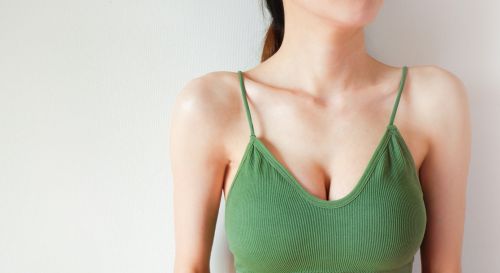
Complications of breast surgery
Exudate, infection
– hematoma: the accumulation of blood around the implant is considered an early complication, which may occur within a few hours after the operation. If necessary, it is better to return to the operating room to stop bleeding;
– serous exudate: the accumulation of the lymphatic fluid around the prosthesis is quite frequent and is often associated with a large swelling. It disappears spontaneously and gradually.
– infection: it’s rare after such operations. It cannot be cured with antibiotics alone and requires an operation to drain and remove the implant during the first months (the time necessary for the secondary safe installation of a new prosthesis).
Other special forms of infection:
– delayed infections with “low noise”: this is an infection with minor symptoms that are difficult to detect during a check-up. It can occur several years after the implantation;
– microabscesses: they are more often, appear in the suture lines and quickly dissolve after removal of the thread and local treatment;
– staphylococcal toxic shock: it is recorded in extremely rare cases.
Necrosis of the skin
It is a consequence of insufficient oxygenation of tissues due to the insufficient local blood supply, which can be the result of excessive pressure, bruising, infection or excessive smoking of the patient. This is a very rare but dangerous complication, which can locally expose the prosthesis, in particular, by the divergence of the sutures. It will require surgical intervention, sometimes with the temporary removal of the breast implant.
Cicatricial abnormalities
The healing process is sometimes accompanied by random phenomena, when the scars are more noticeable than originally thought, and they take a variety of forms: they are enlarged, fused, hyper- or hypo-pigmented, hypertrophic (bloated) or even, exceptionally, keloid.
Sensitivity change
It often appears in the first months but, in the end, in most cases it is normalized. Dysesthesia (a decrease or increase in sensitivity to touch) is rare but it’s possible, especially near the areola and nipple.
Galactorrhea
There are very rare cases of unexplained postoperative hormonal stimulation, which is expressed in the secretion of milk (“galactorrhea”) sometimes with the accumulation of fluid around the prosthesis.
Pneumothorax
It occurs very rarely and requires special treatment.
Risks directly related to breast implants
“Folds” or “wavy” appearance
Implants have a soft structure, but it is quite possible that their membrane can be wrinkled and these folds will be perceptible to the touch and even visible under the skin in some positions, thus giving them a wavy appearance.
This phenomenon is more common among thin women and it can be corrected by the operation of lipomodelling, which lies in placing a thin layer of fat under the skin of the breast in order to “cover” the implant.
Capsules
The invariable and normal physiological reaction of the human body to the presence of a foreign body is to isolate the surrounding tissues, creating a kind of hermetic membrane that will surround the implant.
Typically, this membrane is thin, soft, and invisible, but sometimes the reaction is intensified, and the capsule thickens, becomes fibrous and is pulled in by compressing the implant, thus acquiring the name “shell”.
Depending on the intensity of the phenomenon, this can lead to a simple breast lift, narrowing or visible deformation with the transition into a spheroidal form of the prosthesis, leading to undesirable consequences, i.e., the appearance of a hard, painful and dislocated sphere.
This fibrosis is sometimes a derivative after a hematoma or infection, but very often it is difficult to foresee its occurrence as a result of accidental organic reactions.
Significant progress has been made in recent years in the field of surgical methods and especially in the development and creation of implants, which led to a significant decrease in the capsule index and their intensity. If necessary, by performing a repeat operation, it’s possible to correct such contracture by cutting the capsule (“capsulotomy”).
Gap
It is stated that breast prostheses are not perfect. Over time, the shell may lose its tightness. It can be a simple porosity, pinholes, and the formation of micro-fractures or even real holes. In very rare cases, this can be the result of severe trauma, injection and, most often, the result of gradual wear and tear of the wall.
It may result in the leakage of the product filling the prosthesis, which has consequences depending on the content:
– in the case of the physiological solution or absorbable hydrogel, we can observe partial or complete crushing (fast or slow);
– in case of a silicone gel (not absorbable), it will remain inside the membrane, which isolates the prosthesis.
This can contribute to the appearance of the capsule, but it can also remain without consequences and pass completely unnoticed. In some cases, which have become much rarer (in particular, due to the better “cohesion” of modern gels), a gradual penetration of the gel into surrounding tissues is possible.
The rupture of the prosthesis provides, most often, an operation aimed at changing the implants.
Incorrect position, offset
An incorrect position or derivative implant displacement that affects the shape of the breast can sometimes justify surgical correction.
Deformation of the chest
In rare cases, prostheses with a fibrous shell left for a long time in a certain place can be “imprinted” in the tissue, leaving at their removal a deformation of the chest, which is difficult to correct.
Delayed seroma
In very rare cases, a delayed effusion may occur around the prosthesis, which may require a puncture performed through ultrasound, using appropriate cytological studies.
During the cytological studies, lymphomatous cells were found that forced the removal of the fibrotic capsule, although there was no certainty of a connection between this reaction and the breast implant.
Explanatory note on breast reconstruction using prostheses
1 Surgery
It is carried out under general anesthesia in a half-sitting position
The cuts are in the fold under the breast, or, in extreme cases, below the areola. The cuts are always very short.
Suction drainage is installed on each side for several days.
2 Postoperative period
The length of stay in the hospital depends on the degree of wound healing and drainage (an average of 1 to 2 days).
Upon discharge, the surgeon will prescribe home care, medications, and dressings that you’ll need to purchase.
It is advisable to wear a supporting bra prescribed by the surgeon on a 24-hour basis for about 3 weeks.
The dressings will be regularly monitored by the surgeon and will be changed daily at home by a nurse or a patient.
It is forbidden to take a bath during the treatment (5 weeks), contrast shower is allowed after the surgeon’s permission 10 days after the operation. It’s necessary to change dressings after each shower.
The stitches are hidden under the skin and they’ll completely dissolve. During this period, there will be a pain when you raise your hands, as well as the feeling of heaviness.
3 Risks and complications (incomplete list)
Hematomas within a few hours after the operation (drainage immediately after the block)
Infections, weakening of scars (removal of prostheses)
Poor healing, enlarged scars (care, infiltration, massage, and maybe even surgical intervention)
Asymmetry, the mobility of implants (surgical intervention)
Allergy to dressings (dressing change)
Capsules: late complication (removal of the membrane under the general anesthesia and re-installation of the prosthesis)
Creation of fractures on the prosthesis (replacement of the breast prosthesis).
Get free consultation on WhatsApp number +33 6 33 16 80 40




